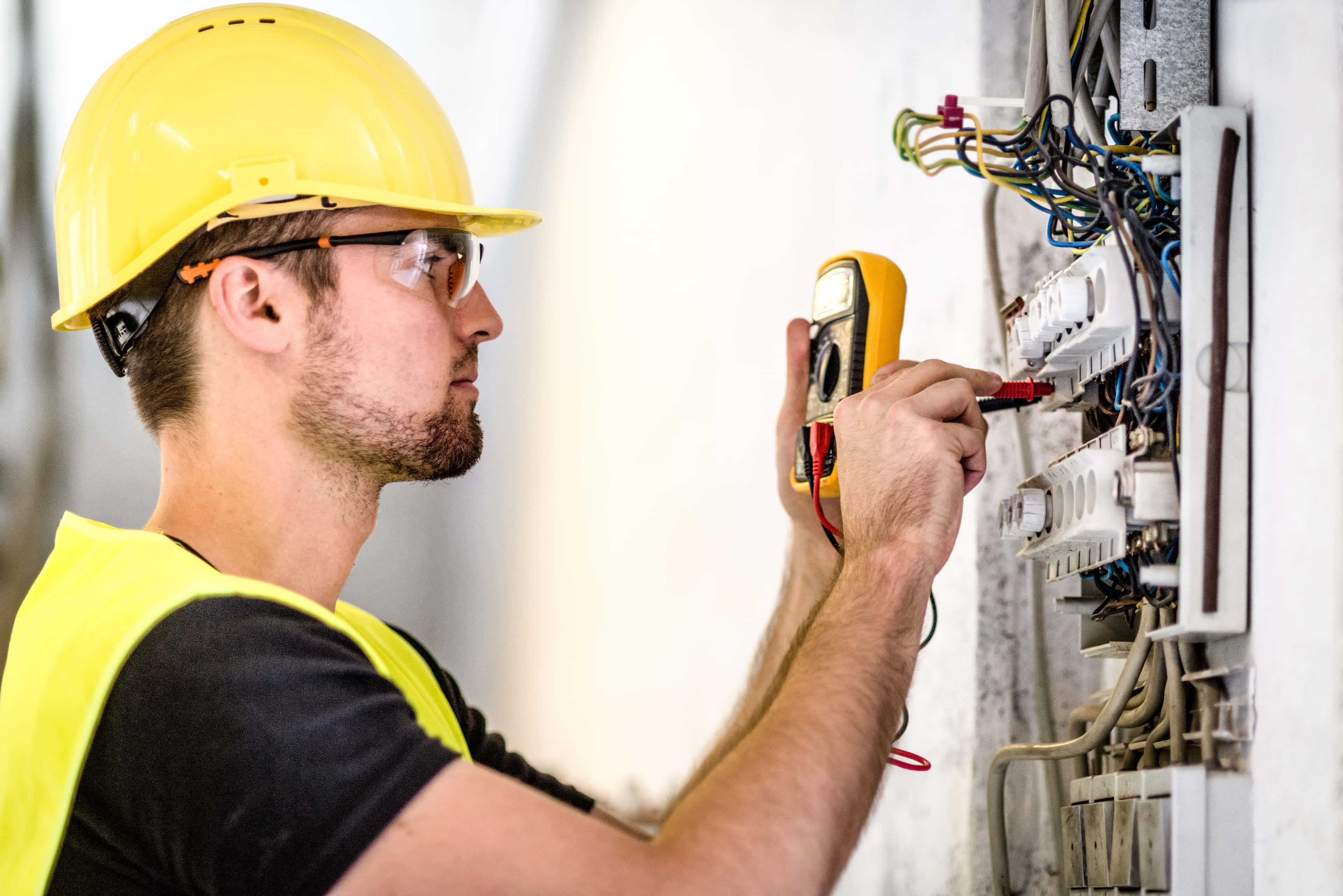If you're training to become an electrician technician, mastering the use of a digital multimeter is an essential part of the job. These versatile tools are used in residential, commercial and industrial settings to diagnose electrical issues, test circuits and more.
Universal Technical Institute (UTI) offers a 12-month Electrical, Electronics, & Industrial Technology (EEIT) program that helps students prepare for careers in the electrical field.130 During this program, they’ll learn how to use a variety of equipment, including digital multimeters.
If you’re interested in training for the industry or are simply curious, keep reading as we break down how to use a digital multimeter, explain its most common features and walk through basic steps for operating one correctly and safely.
What is a Digital Multimeter?
A digital multimeter (DMM) is a handheld device used to measure multiple electrical values. As a must-have tool for electrician technicians, it helps identify problems in circuits and verify that systems are functioning as intended. Most digital multimeters can measure:
- AC voltage (alternating current).
- DC voltage (direct current).
- Resistance (measured in ohms).
- Current (measured in amperes).
Advanced multimeters may also be used to check continuity, test diodes and measure frequency or temperature. Whether you're working on household wiring or industrial control panels, a digital multimeter is one of the most reliable tools in your toolkit.
Across the various electrical technician course topics UTI students will learn about, which include electrical wiring and AC and DC electrical theory, students will become familiar with working with a DMM.
9 Common Features of a Digital Multimeter
Auto-ranging
Auto-ranging allows the multimeter to automatically select the appropriate range for the electrical value being measured. This feature eliminates guesswork and helps prevent errors.
Auto-polarity
Auto-polarity detects whether the leads are connected in reverse polarity and automatically displays the correct value with a minus sign if needed. It’s especially helpful when measuring DC voltage.
Auto-off
To save battery life, the auto-off feature shuts the multimeter down after a period of inactivity. This is convenient for busy technicians.
Continuity test
The continuity test checks if a circuit is complete by sending a small current through it. If the circuit is closed, the multimeter emits a beep, making it easier to locate breaks or shorts in wiring.
Diode test
A diode test verifies the operation of diodes and semiconductor components, ensuring they only allow current to flow in one direction. This is critical in electronic troubleshooting.
Data hold
The data hold feature locks the last reading on the display, allowing technicians to record or analyze values without keeping the leads connected.
Min/Max/Avg
This function records minimum, maximum and average values measured over a period of time. It’s useful for spotting fluctuations in electrical signals.
Relative mode
Relative mode sets a reference point for measurements, allowing for comparison of voltage drops or resistance changes relative to that base value.
True RMS
True RMS (Root Mean Square) provides more accurate readings for AC signals, especially when dealing with irregular waveforms or non-linear loads often found in industrial settings.
6 Basic Steps in Using a Multimeter
Whether you're checking voltage, resistance or current, using a digital multimeter correctly is critical. Here are six basic steps every electrician technician should know:
Step 1: Turning on the multimeter
Press the power button to turn on the multimeter. Ensure the battery is charged or fresh before starting any measurements.
Step 2: Selecting the appropriate mode
Use the dial to select what you want to measure: voltage (AC or DC), current or resistance. For beginners, choosing a multimeter with auto-ranging can make this step simpler.
Step 3: Plugging in the test leads
Insert the black lead into the COM (common) port and the red lead into the appropriate input based on what you're measuring (typically marked VΩ for voltage and resistance or A for current).
Step 4: Connecting test leads to the electrical component
Touch the leads to the correct points on the component or circuit. Always ensure you're contacting clean, dry surfaces to get accurate readings.
Step 5: Interpreting displayed values
Read the results shown on the digital display. Double-check the unit of measurement (V, A, Ω) to ensure you're interpreting the reading correctly.
Step 6: Turning off the multimeter
After you're done, switch the dial to OFF or press the power button to shut it down. Disconnect the test leads and store your multimeter safely.
Learn Skills for an Electrician Technician Career with UTI
Learning how to use a digital multimeter is just one part of becoming a skilled electrician technician.
At UTI, our EEIT program gives students hands-on training with real-world tools and systems, including multimeters.
It can take as little as 12 months to graduate with the skills you need for the electrical field. So, what are you waiting for? Enroll today!
Universal Technical Institute of Illinois, Inc. is approved by the Division of Private Business and Vocational Schools of the Illinois Board of Higher Education.

